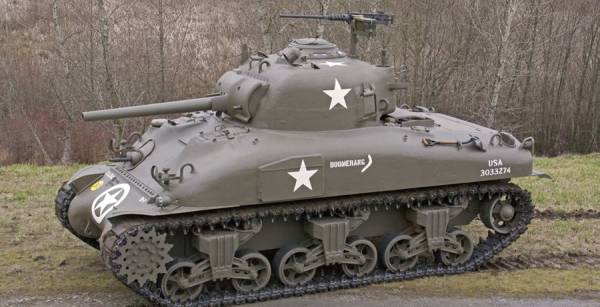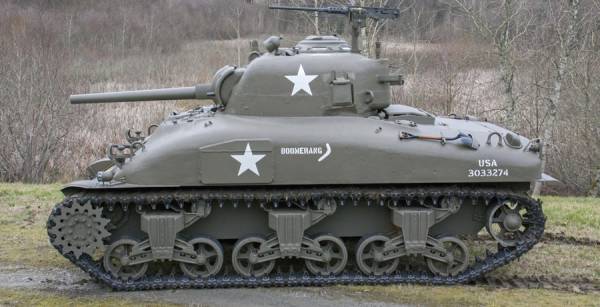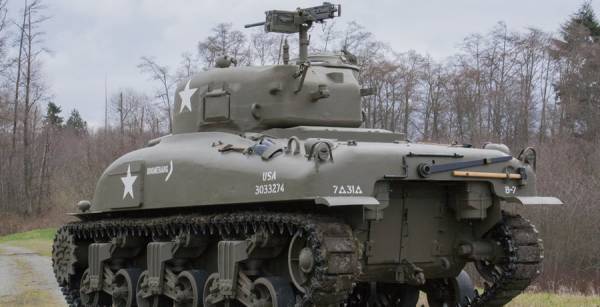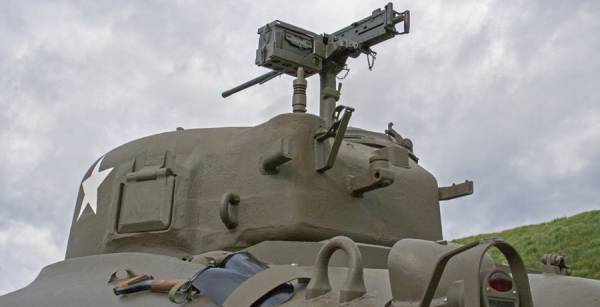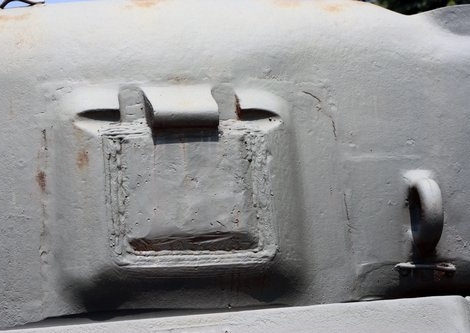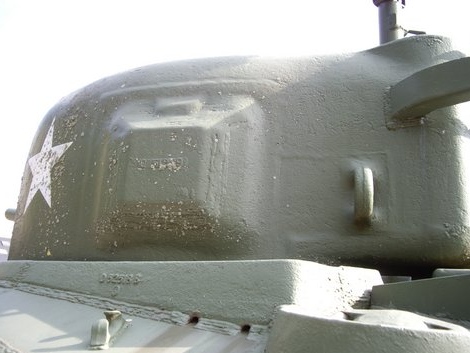The "Pistol Port" that wasn't used as a "Pistol Port" on the M4 Sherman Tank
The M4 “Sherman” tank entered production during July 1942 with the D50878 turret casting. The earliest versions of this turret featured a “pistol port” on the left side towards the rear. In the photographs below (of an M4A1 “Sherman” tank), the “pistol port” appears as a small, rectangular door on the side of the turret; right of the white star.
Shortly after the tank entered service, users began to report problems with the locking device of the pistol port. On top of that, Ordnance Department tests found the pistol port to be a ballistic weak point. In addition, two areas on the inside right front of the turret casting had been thinned to allow for the proper operation of the traversing mechanism. As the first Shermans entered combat, troops began to report that the enemy aimed for these “thin spots.” As a result of these issues, the D50878 turret was revised in April 1943 to eliminate the pistol port, as well as “increase thickness of turret in area of the traversing mechanism.” Tanks on the production lines, and in depots, had their pistol ports welded closed (as shown in the photographs below).
The “pistol port” was deleted from the revised D50878 turret casting which began to enter the production pipeline around June 1943.
However, the government failed to understand that tank crews didn't actually use the “pistol port” as a “firing port”. Instead, the crews primarily used the “pistol port” for loading ammunition into the tank. This was much quicker and more efficient than lowering the ammunition through the door (aka hatch) on the top of the turret (as the Engineers/Designers had intended). And, as the tank was usually in enemy territory, it was much more convenient and safer for the crew to expel spent casings through the “pistol port” rather than get out of the tank or otherwise expose themselves to enemy fire. After all, having spent casings rolling around and cluttering the small confines of the tank was more than a small inconvenience. Consequently, most tank crews in the field liked having the “pistol port”. They just wanted a more reliable locking mechanism.
The decision to eliminate the “pistol port” was universally unpopular. The complaints from tank crews in combat areas were quick and unkind. The “pistol port” was quickly added back into the final version of the D50878 turret casting.
The M4 design was constantly undergoing changes to include a number of improvements. In late 1943 the M4 was changed to include the improved D78461 turret casting… which included a return of the “pistol port”.
The Lesson
The lesson learned from this story is that end users may not actually use a product feature the way that the Engineers/Designers had intended it. Instead, the users may have developed a more “value-added” use for the feature. Listen to the “Voice of the customer” and understand how your customers are actually using your product.
Had actual use of the “pistol port” been understood, and communicated to the Engineers/Designers, the “pistol port” could have been more accurately named a “Loading Door”.
Sources:
Sherman Tank Turrets and Turret components
Sherman 75mm turret pistol port
"Transformé" Sherman tanks
FHCAM - M4A1 Sherman Medium Tank
